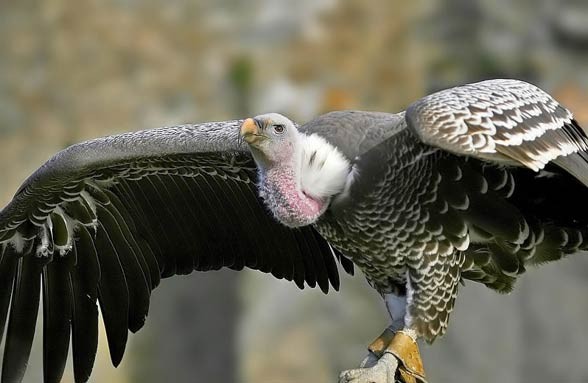Top-flying birds – Top 10
People for years have wondered how high birds can fly. Which of them is the record holder and whether it is possible for the bird flew over the Himalayas? Today’s statement will give the answer to above questions.
10. White stork (Ciconia ciconia) – 4,800 m (15,750 feet)

The white stork (Ciconia ciconia) is a large, long-legged bird in the stork family. It has a wingspan of around 155 cm (61 in) and can reach a height of up to 110 cm (43 in). The white stork is primarily white with black wings and a long, thin, curved beak. It has red legs and a red patch on its throat.
White storks are native to Europe, Africa, and Asia. They are migratory birds and can be found in a variety of habitats including wetlands, grasslands, and agricultural areas. They are omnivorous and feed on a wide range of prey including insects, small mammals, and fish.
White storks are known for their long, sedentary nesting habits and their elaborate courtship rituals. They build large nests on top of trees, cliffs, or man-made structures such as telephone poles or rooftops. Both male and female storks participate in nest building and incubating the eggs. Once the eggs hatch, both parents take turns feeding the chicks.
White storks are considered to be a symbol of good luck in many cultures and are often depicted in art and folklore. They are protected by law in many countries and are listed as a species of “Least Concern” by the International Union for Conservation of Nature (IUCN).
9. Andean condor (Vultur gryphus) – 5,000 m (16,400 ft)

The Andean condor (Vultur gryphus) is a large, majestic bird in the vulture family. It is native to South America and can be found in the Andes mountain range and adjacent coastal areas. The Andean condor is the national symbol of Argentina, Chile, and Peru.
The Andean condor has a wingspan of up to 3.2 meters (10.5 feet) and can reach a height of up to 1 meter (3.3 feet). It is mostly black with a white neck ruff and a distinctive red comb on the top of its head. The Andean condor has a large, heavy body and a short, hooked beak. Its wings are long and broad, allowing it to soar for hours at a time.
Andean condors are scavengers and feed mainly on carrion. They have excellent eyesight and can spot a dead animal from great distances. They also have a keen sense of smell, which helps them locate food. Andean condors mate for life and build large nests on cliffs or rocky outcrops. Both male and female condors participate in nest building and incubating the eggs.
The Andean condor is classified as “Near Threatened” by the International Union for Conservation of Nature (IUCN). It is threatened by habitat loss, hunting, and poisoning. Conservation efforts are underway to protect and increase the population of Andean condors.
8. Bar-tailed godwit (Limosa lapponica) – 6,000 m (20,000 feet)

The bar-tailed godwit (Limosa lapponica) is a large, long-billed shorebird in the sandpiper family. It has a distinctive long, straight, and thin bill and a slightly upturned tail. The bar-tailed godwit is a migratory bird and can be found in wetlands, grasslands, and coastal areas in Europe, Asia, and North America.
The male and female bar-tailed godwits have similar plumage, which is mostly a mottled brown color with a pale underside. They have long, pointed wings and long, thin legs. During the breeding season, the male’s bill turns bright orange.
Bar-tailed godwits feed on invertebrates such as worms and insects, which they locate by probing the ground with their long beaks. They are known for their long-distance migration habits and are among the longest-distance migrants of any bird species. The bar-tailed godwit makes one of the longest non-stop flights of any bird, flying up to 11,000 kilometers (6,800 miles) from its breeding grounds in Alaska to its wintering grounds in New Zealand.
The bar-tailed godwit is classified as a “Near Threatened” species by the International Union for Conservation of Nature (IUCN). It is threatened by habitat loss, hunting, and the impact of human activities such as agriculture and development. Conservation efforts are underway to protect and increase the population of bar-tailed godwits.
7. Mallard, wild duck (Anas platyrhynchos) – 6,400 m (21,000 feet)

The mallard (Anas platyrhynchos) is a common and widespread species of duck found throughout much of the world. It is a medium-sized duck, with a body length of about 50 cm (20 in) and a wingspan of around 80 cm (31 in). The male mallard has a glossy green head, a white collar, and a brown breast. It also has a distinctive curved, purple-blue bill and a yellow patch on its tail. The female mallard is a mottled brown color with a lighter underside and a orange bill.
Mallards are found in a variety of wetland habitats including ponds, lakes, marshes, and rivers. They are omnivorous and feed on a wide range of prey including insects, snails, small fish, and plant matter. Mallards are known for their distinctive calls, which are often heard in urban parks and gardens.
Mallards are important to many cultures and are often featured in art and folklore. They are also popular game birds and are hunted for sport in many countries. The mallard is classified as a “Least Concern” species by the International Union for Conservation of Nature (IUCN) due to its large and stable population. However, some subspecies of mallard are considered to be at risk, and conservation efforts are underway to protect these populations.
6. Bearded vulture (Gypaetus barbatus) – 7,300 m (24,000 feet)

The bearded vulture (Gypaetus barbatus), also known as the lammergeier or ossifrage, is a large bird of prey in the vulture family. It is native to Europe, Africa, and Asia and can be found in mountainous regions and rocky cliffs. The bearded vulture is the largest Old World vulture and has a wingspan of up to 2.9 meters (9.5 feet).
The bearded vulture has a distinctive appearance, with a long, narrow tail, long, broad wings, and a large, heavy body. It is mostly black with a white neck ruff and a long, curved beak. The male and female bearded vultures are similar in size and appearance.
Bearded vultures are scavengers and feed mainly on carrion. They are known for their habit of dropping large bones from a height in order to break them open and extract the marrow. Bearded vultures are also known for their elaborate courtship rituals, which involve the male and female performing aerial displays and calling to each other.
The bearded vulture is classified as “Near Threatened” by the International Union for Conservation of Nature (IUCN). It is threatened by habitat loss, hunting, and the use of poisons to control pest species. Conservation efforts are underway to protect and increase the population of bearded vultures.
5. Alpine chough, yellow-billed chough, (Pyrrhocorax graculus) – 8,000 m (26,500 feet)

The Alpine chough, also known as the yellow-billed chough (Pyrrhocorax graculus), is a small, long-winged bird in the crow family. It is native to the mountainous regions of Europe and Asia and is found in alpine and subalpine habitats such as cliffs, rocky slopes, and high-elevation grasslands.
The Alpine chough has a distinctive appearance, with a glossy black plumage, a bright red bill and legs, and a long, curved tail. It is a agile and acrobatic flyer and is often seen soaring and gliding on the thermals.
Alpine choughs are omnivorous and feed on a wide range of prey including insects, seeds, fruit, and small invertebrates. They are also known for their intelligence and problem-solving abilities. They are social birds and often form large flocks, which can be heard making loud, chattering calls.
The Alpine chough is classified as a “Least Concern” species by the International Union for Conservation of Nature (IUCN). However, some populations are at risk due to habitat loss, hunting, and other human activities. Conservation efforts are underway to protect and increase the population of Alpine choughs.
4. Whooper swan (Cygnus cygnus) – 8,200 m (27,000 feet)

The whooper swan (Cygnus cygnus) is a large, long-necked bird in the swan family. It is native to Europe and Asia and can be found in a variety of wetland habitats including lakes, marshes, and rivers. The whooper swan is the national bird of Finland and is also the largest swan species found in Europe.
The whooper swan has a wingspan of up to 2.7 meters (9 feet) and can reach a length of up to 1.5 meters (5 feet). It has a distinctive appearance, with a long, curved neck, a black bill with a yellow patch at the base, and a white plumage. The male and female whooper swans are similar in size and appearance.
Whooper swans are omnivorous and feed on a wide range of prey including aquatic plants, insects, and small invertebrates. They are known for their distinctive calls, which are loud and trumpeting. Whooper swans are also known for their elaborate courtship rituals, which involve the male and female performing elaborate displays and calling to each other.
The whooper swan is classified as a “Least Concern” species by the International Union for Conservation of Nature (IUCN). However, some populations are at risk due to habitat loss, hunting, and other human activities. Conservation efforts are underway to protect and increase the population of whooper swans.
3. Bar-headed goose (Anser indicus) – 8,800 m (29,000 feet)

The bar-headed goose (Anser indicus) is a large, migratory bird in the goose family. It is native to Central and South Asia and can be found in a variety of wetland habitats including lakes, marshes, and rivers. The bar-headed goose is known for its distinctive migration patterns, which take it over the high Himalayan mountain range at altitudes of up to 6,000 meters (20,000 feet).
The bar-headed goose has a wingspan of up to 1.5 meters (5 feet) and can reach a length of up to 75 cm (30 in). It has a distinctive appearance, with a grey body, a white face and neck, and a black head with two broad, vertical bars. The male and female bar-headed geese are similar in size and appearance.
Bar-headed geese are omnivorous and feed on a wide range of prey including aquatic plants, insects, and small invertebrates. They are social birds and often form large flocks. They are known for their distinctive calls, which are loud and honking.
The bar-headed goose is classified as a “Least Concern” species by the International Union for Conservation of Nature (IUCN). However, some populations are at risk due to habitat loss, hunting, and other human activities. Conservation efforts are underway to protect and increase the population of bar-headed geese.
2. Common, Eurasian crane (Grus grus) – 10,000 m (33,000 feet)

The common, or Eurasian, crane (Grus grus) is a large, long-legged bird in the crane family. It is found throughout much of Europe, Asia, and North Africa and can be found in a variety of wetland habitats including marshes, wetlands, and grasslands. The common crane is known for its elaborate courtship rituals, which involve the male and female performing elaborate displays and calling to each other.
The common crane has a wingspan of up to 2.5 meters (8 feet) and can reach a height of up to 1.5 meters (5 feet). It has a distinctive appearance, with a grey body, a white face and neck, and a black crown. The common crane has a long, thin bill and long, thin legs. The male and female common cranes are similar in size and appearance.
Common cranes are omnivorous and feed on a wide range of prey including insects, small mammals, and plant matter. They are social birds and often form large flocks. They are known for their distinctive calls, which are loud and trumpeting.
The common crane is classified as a “Least Concern” species by the International Union for Conservation of Nature (IUCN). However, some populations are at risk due to habitat loss, hunting, and other human activities. Conservation efforts are underway to protect and increase the population of common cranes.
1. Rüppell’s griffon vulture (Gyps rueppellii) – 11,300 m (37,000 feet)

Rüppell’s griffon vulture (Gyps rueppellii) is a large bird of prey in the vulture family. It is native to Africa and can be found in a variety of habitats including grasslands, savannas, and woodlands. Rüppell’s griffon vulture is named after the German naturalist Eduard Rüppell, who first described the species in the 19th century.
Rüppell’s griffon vulture has a wingspan of up to 2.7 meters (9 feet) and can reach a height of up to 1 meter (3.3 feet). It has a distinctive appearance, with a large, heavy body, a short, hooked beak, and a bald head. The plumage is mostly brown with a pale underside. The male and female Rüppell’s griffon vultures are similar in size and appearance.
Rüppell’s griffon vultures are scavengers and feed mainly on carrion. They have excellent eyesight and can spot a dead animal from great distances. They also have a keen sense of smell, which helps them locate food. Rüppell’s griffon vultures mate for life and build large nests on cliffs or rocky outcrops. Both male and female vultures participate in nest building and incubating the eggs.
Rüppell’s griffon vulture is classified as “Near Threatened” by the International Union for Conservation of Nature (IUCN). It is threatened by habitat loss, hunting, and the use of poisons to control pest species. Conservation efforts are underway to protect and increase the population of Rüppell’s griffon vultures.
Height
Top-flying birds soar to altitudes at which airliners fly (10,000 – 11,000 m). Some of them can rise up above the highest peak of the world – Mount Everest 8,848 m / 8,850 m (depending on the measurement).
The answer to the title question is “yes”. Birds can fly over the Himalayas.

Recommended
- The fastest animals in the world – TOP 100
- The fastest birds – TOP 20
- Animals records
- Largest eagles Top10
- Largest birds of prey
- Haast’s eagle
- Bald eagle
- Steller’s sea eagle
- Philippine eagle
- Crowned eagle
- Martial eagle
- Wedge-tailed eagle



















These pics are amazing. i will share them on my blog.
Fascinating, the heights to which these birds can fly.